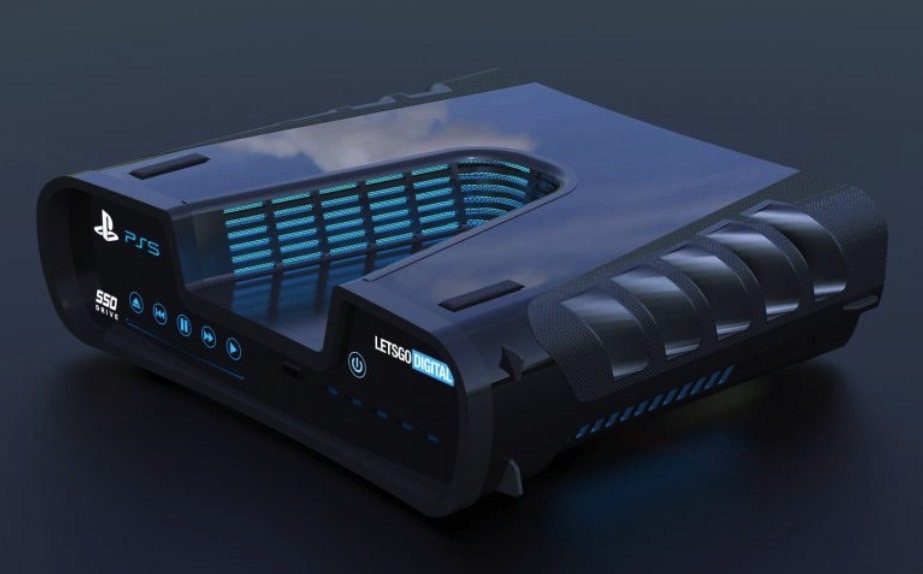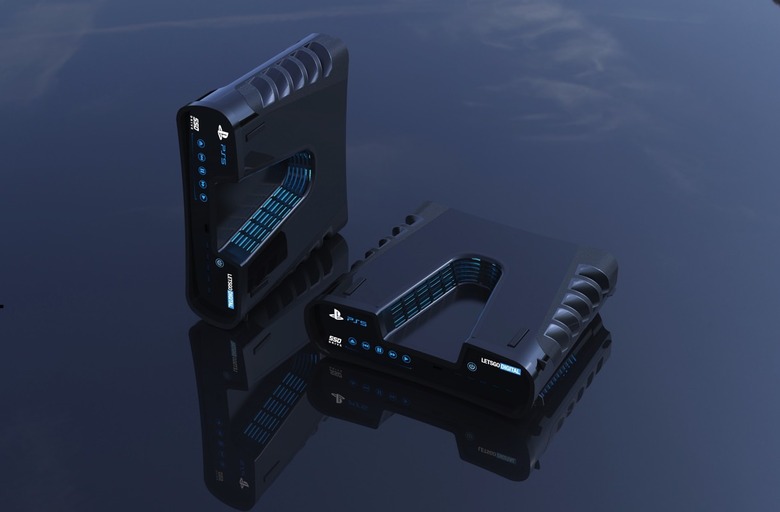The Leaked PlayStation 5 Feature That No One Saw Coming Might Be Real After All
Sony earlier this week confirmed the official name of the PlayStation 5 console that will launch by Christmas 2020 — it's PlayStation 5, no huge surprise there. The company also revealed some details about the new console's user interface and announced a brand new controller that will deliver a bunch of exciting features, including improved haptic feedback and USB-C connectivity. But Sony also showed a PS5 dev kit while demoing the new DualShock 5 controller — that's probably what they're calling it — and that's actually an interesting detail in all this influx of PS5 updates. That's because Sony's demo events may have confirmed the one awesome PS5 feature that no one saw coming.
PS5 design

In addition to Sony's PlayStation 5 announcement, we also got more in-depth coverage about the features Sony just announced from Wired, which was able to test out the new controller on a PS5 dev kit console. This is where things get interesting because the development PS5 looked a lot like the one that was leaked several times in the past few months — most recently, it was Gizmodo's story that seemed to confirm all the leaks. From Wired:
Next, a version of Gran Turismo Sport that Sony had ported over to a PS5 devkit—a devkit that on quick glance looks a lot like the one Gizmodo reported on last week. (The company refused to comment on questions about how the devkit's form factor might compare to what's being considered for the consumer product.)
While Sony might not be ready to share any PS5 design details at this time, the main takeaway from the paragraph above is that the PS5 device that developers are using to come up with new games for the console looks a lot like the design that Sony patented. After all, that's where it all started. A design patent was discovered a few weeks ago, and then people started confirming that Sony was actually using that design in real life. And that's how we ended up with the PS5 renders seen above.
PlayStation Assist

This brings us to a different patent that describes the impressive PS5 feature I was talking about. Sony has been developing a voice assistant of its own, which we'll call PlayStation Assist for lack of a better/official name. The assistant would be able to respond to various game-related questions during gaming sessions, offering players clues and tips in real-time (image above). That way, they wouldn't have to stop playing to browse the web for help.
The assistant would also work on mobile phones via a companion app that would deliver stats about games, as well as live information about what's going on in a particular game. That's something that hasn't been done before, and something other intelligent assistants can't offer.
Sony is far from confirming the feature, and the company had to deflect Wired's questions about a microphone-like hole on the new DualShock controller — emphasis ours:
He says this like he says many other things: knowing he'll fend off any follow-up question that ventures beyond what he wants to talk about. Like, What does the UI actually look like? Or, How big will the SSD be? Or even, Is that a microphone? Which is exactly what I ask when Cerny hands me a prototype of the next-generation controller, an unlabeled matte-black doohickey that looks an awful lot like the PS4's DualShock 4. After all, there's a little hole on it, and a recently published patent points to Sony developing a voice-driven AI assistant for the PlayStation. But all I get from Cerny is, "We'll talk more about it another time." ("We file patents on a regular basis," a spokesperson tells me later, "and like many companies, some of those patents end up in our products, and some don't.")
Yes, not all the tech that gets patented ends up in new products. But these patents, including the design one above, were discovered just recently. And Wired's story just confirmed that the V-shaped PS5 dev kit is real.
Yes, we're still speculating here. But wait, it gets better.
In the same Wired piece, EA chief studio officer Laura Miele discussed loosely the PS5's hardware, at which point she mentioned the console will support machine learning — again, emphasis ours:
"I could be really specific and talk about experimenting with ambient occlusion techniques, or the examination of ray-traced shadows," says Laura Miele, chief studio officer for EA. "More generally, we're seeing the GPU be able to power machine learning for all sorts of really interesting advancements in the gameplay and other tools." Above all, Miele adds, it's the speed of everything that will define the next crop of consoles. "We're stepping into the generation of immediacy. In mobile games, we expect a game to download in moments and to be just a few taps from jumping right in. Now we're able to tackle that in a big way."
EA could certainly develop games that make use of machine learning for whatever purposes. But if the hardware supports machine learning out of the box, that means Sony might take advantage of it as well.
You know what machine learning is good for? Virtual assistants, including Google Assistant, Siri, Alexa, Cortana, and the likes. And that's another hint that PlayStation Assist might be real.
